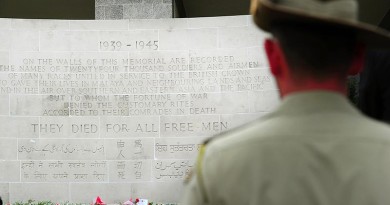Mining for information at RIMPAC

Partner nation teams are using autonomous underwater vehicles (AUVs) to assist explosive ordnance disposal (EOD) dive teams by searching for manmade objects that could represent mines.
CAPTION: Multinational training participants prepare to launch a REMUS 100 autonomous underwater vehicle (AUV) as a part of an AUV and unmanned underwater vehicles search and calibration training event conducted during RIMPAC 2022. Photo by Seaman Victoria Danser.
Royal Australian Navy hydrographic surveyors aboard the San Antonio-class transport dock ship USS Portland (LPD-27) are working with surveyors from the Royal New Zealand Navy to locate inert mines along the coast in Southern California, US as part of Exercise Rim of the Pacific (RIMPAC) 2022.
Officer in charge of Deployable Geospatial Survey Team 2 Royal Australian Navy Lieutenant Josh Callahan said the Australian team’s mission is to integrate with New Zealand counterparts and collect observations, insights and lessons learned about using the AUV and its capability.
“In the Deployable Geospatial Survey Team 2, we use AUVs to extrapolate depth and conduct feature detection which allows us to view wrecks or platforms that need maintenance,” Lieutenant Callahan said.
“During RIMPAC, we are using them for mine countermeasure. This is significant because it pushes our training boundaries and will improve how we use the capability, and informs further integration with the mine warfare community.”
Royal New Zealand Navy able hydrographic system operator (AHSO) Mackenzie Perry, assigned to HMNZS Matataua, is an AUV handler deployed for RIMPAC 2022 in Southern California.
“My job is to conduct pre-mission checks on the fish to ensure a tasking goes smoothly,” AHSO Perry said.
“We monitor the AUV during the mission, recover it once it has completed the path and then download the site-scan data it has recorded.”
The data the AUV collects greatly reduces the workload on EOD divers and speeds up threat identification.
“Objects that are man-made will light up on the visual capture and we pass that data to the United States Marine Corps and Royal New Zealand Navy dive teams for further investigation.”
AHSO Perry said it has been interesting to observe how partner nations work.
“We learned how to lower the REMUS-100 from a United States Navy helicopter, and we want to take the information back to our home nations to improve deployability.”
RIMPAC 2022 is AHSO Perry’s first overseas deployment.
“I’m here to soak it all in,” AHSO Perry said.
“It’s exciting to work with other nations and learn from them. I hope we continue working together after RIMPAC.”
.
.

.
.





